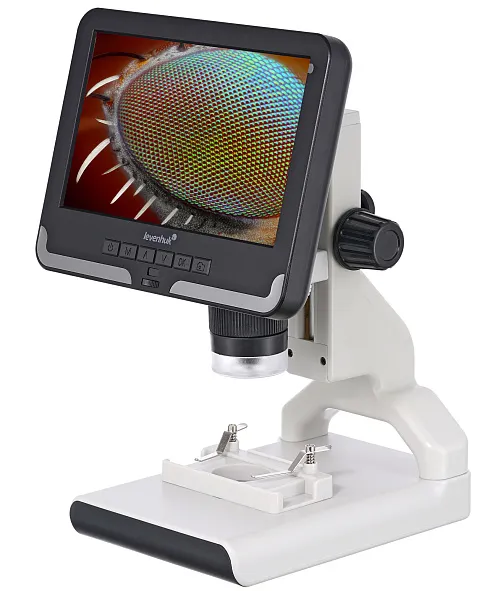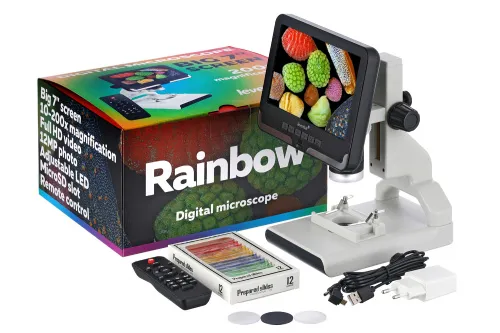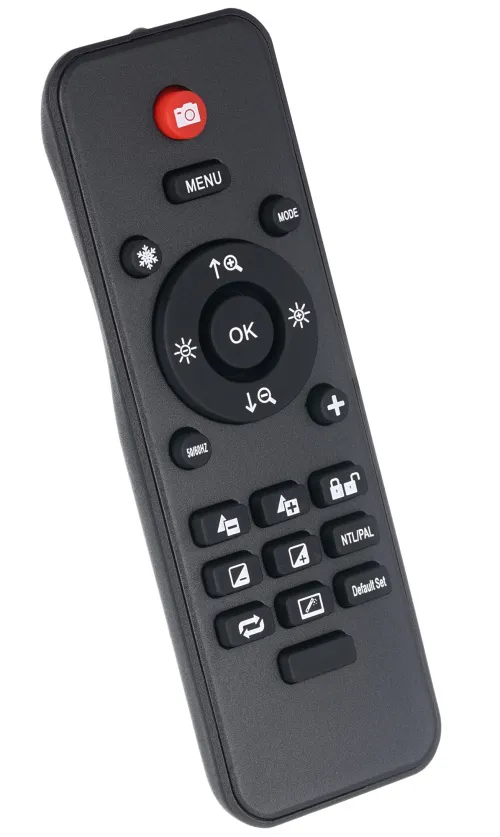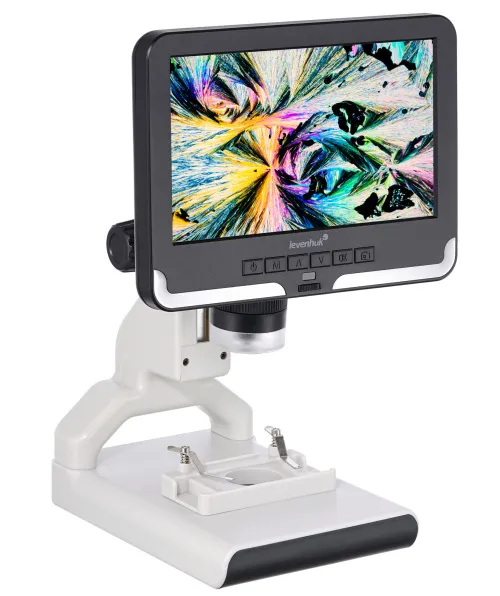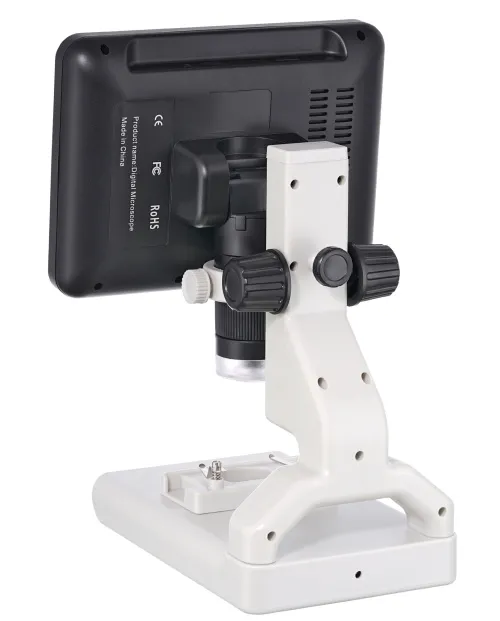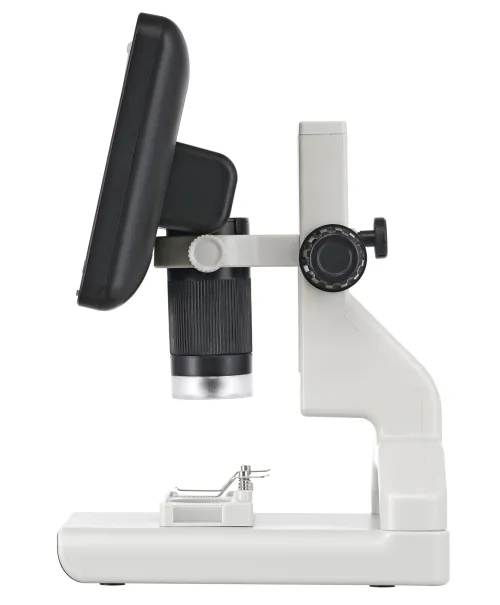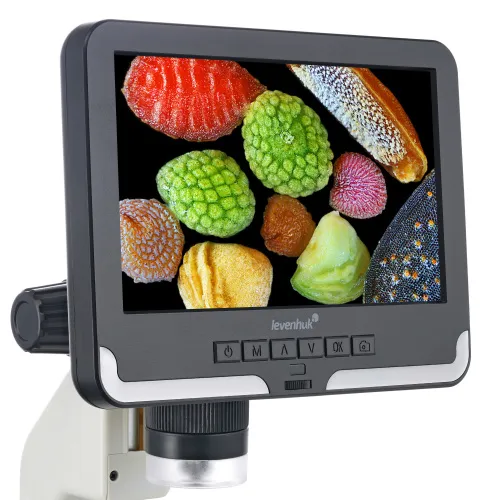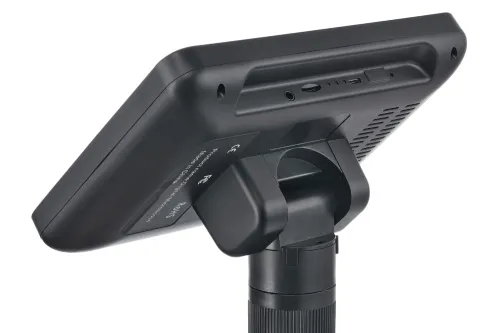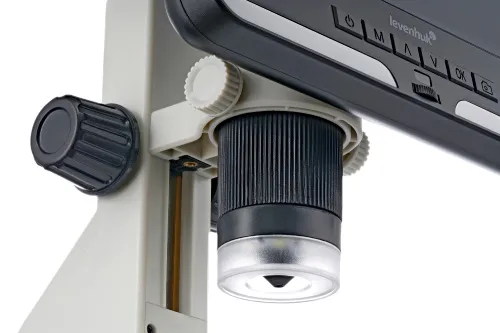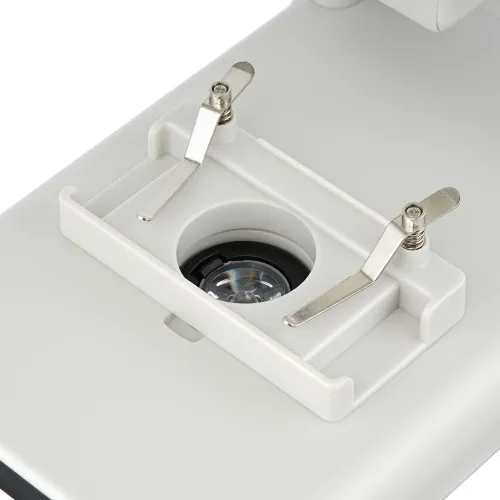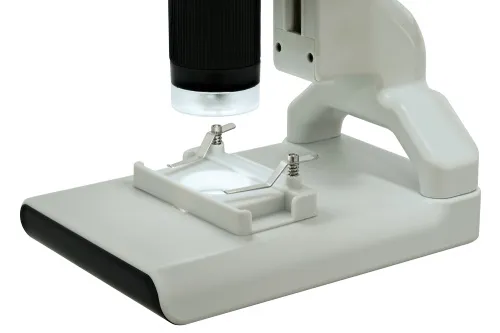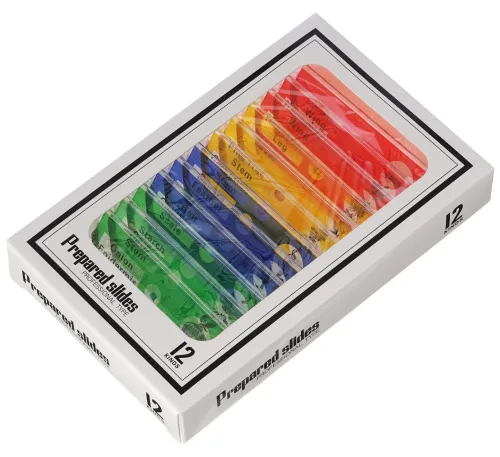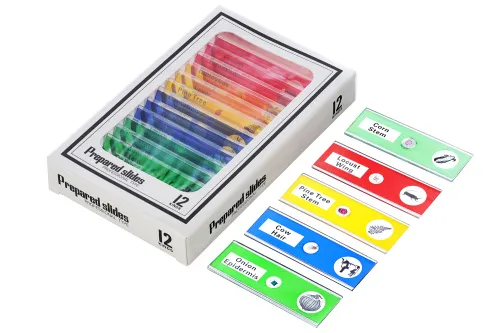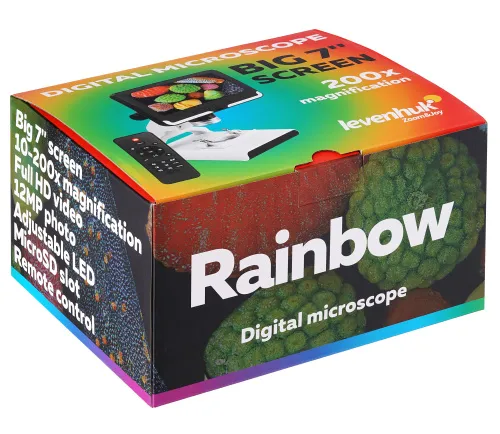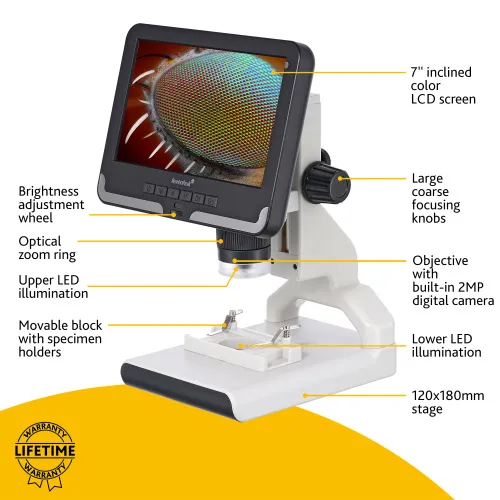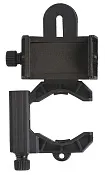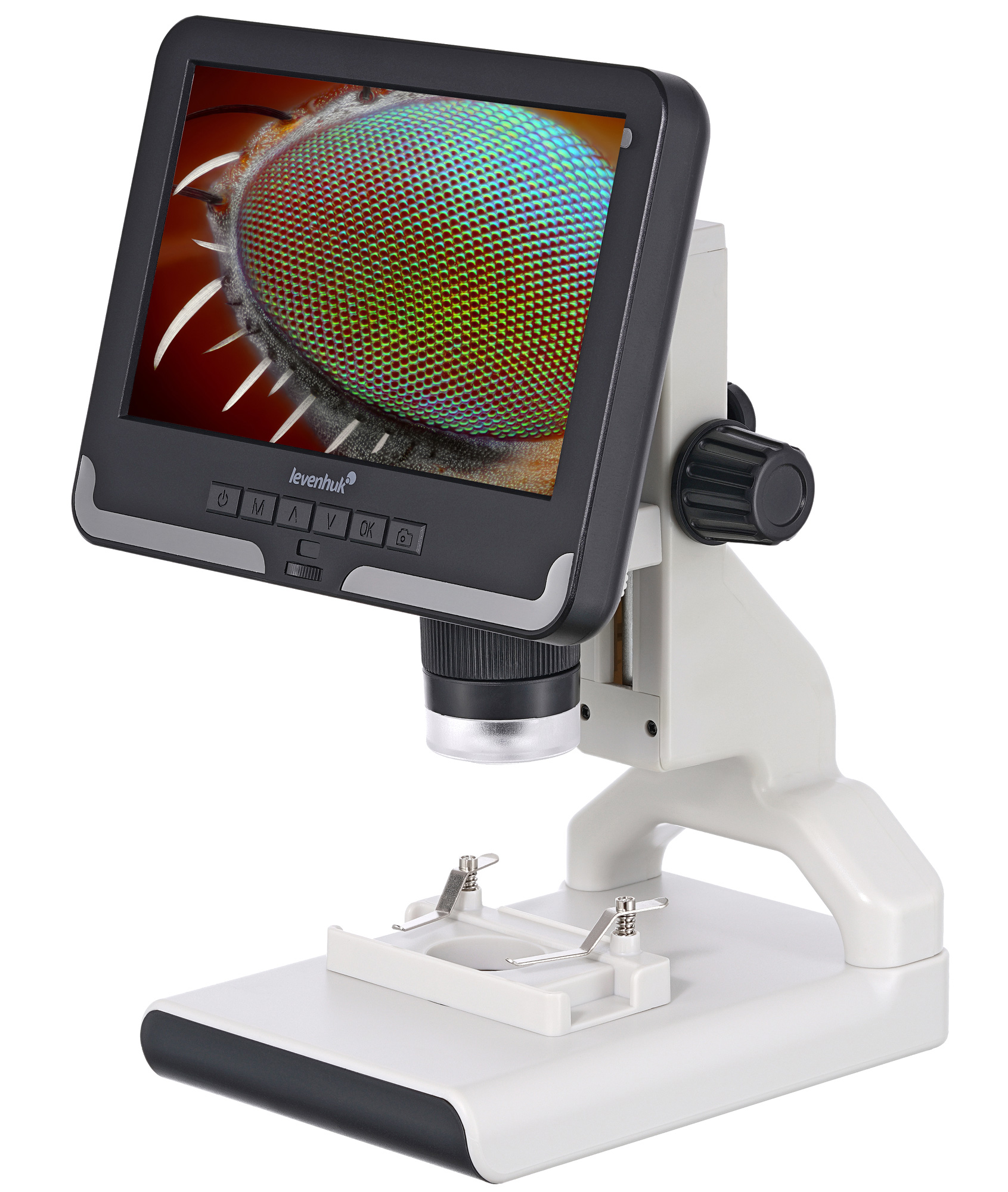Levenhuk Rainbow DM700 LCD Digital Microscope
Remote controlled. Magnification: 10–200 (digital), 10–50 (optical)
| Product ID | 76825 |
| Brand | Levenhuk, Inc., USA |
| Warranty | lifetime |
| EAN | 5905555004440 |
| Package size (LxWxH) | 26x23x15 cm |
| Shipping Weight | 1.22 kg |
Levenhuk Rainbow DM700 LCD is a digital microscope with a large LCD screen. This microscope can be used for studying textiles, insects, coins and banknotes, flora samples as well as machinery and electronics. The microscope allows you to record videos and capture images in high resolution, and you can use a wireless remote control for controlling the device.
The microscope magnification varies from 10 to 200 times, and the optical magnification is from 10 to 50 times. The image from the objective is displayed on the built-in 7-inch color screen. The image is sharp and easy-to-read. There are control buttons under the screen; they are also duplicated on the remote control. With the help of the remote control, you can adjust the lighting brightness, choose suitable magnification for observations, capture images, record videos, and much more.
The microscope stage is illuminated from top and bottom. That allows you to examine samples of any degree of transparency. Metal clips are used for fixating microscope slides. A small set of ready-to-use specimens is included in the kit.
You should pay special attention to the digital capabilities of the device. You can capture high-resolution images and videos. It is up to 12Mpx for images and Full HD for videos. Data is recorded on a memory card (purchased separately).
Features:
- Tilting large 7" color LCD screen
- Image quality: 12Mpx, video quality: Full HD
- Dual LED light with brightness adjustment
- The kit includes ready-to-use microscope slides
- The wireless remote control provides access to many microscope options
The kit includes:
- Microscope with an LCD screen
- Stage with clips and blank slides
- Infrared remote control
- Ready-to-use microscope slides:
- Locust wing
- Honeybee wing
- Honeybee leg
- Laver
- Pine tree stem
- Carnation stem
- Canary feather
- Cow hair
- Goldfish scale
- Potato starch
- Corn stem
- Onion epidermis
- Power cable
- Network adapter
- User manual and lifetime warranty
| Product ID | 76825 |
| Brand | Levenhuk, Inc., USA |
| Warranty | lifetime |
| EAN | 5905555004440 |
| Package size (LxWxH) | 26x23x15 cm |
| Shipping Weight | 1.22 kg |
| Type | digital |
| Microscope head type | digital screen/PC monitor |
| Optics material | optical glass |
| Head | 7" tilting color LCD screen |
| Magnification, x | 10 — 200 |
| Stage, mm | 120x180 |
| Stage moving range, mm | 83/43 |
| Stage features | with clips |
| Focus | coarse (90 mm) |
| Body | plastic |
| Illumination | LED |
| Brightness adjustment | ✓ |
| Power supply | illumination and LCD screen: 110–220 V; 5 V, 1 A via a USB cable (included); remote control: AAA battery - 2 pcs. (not included) |
| Operating temperature range, °C | -20...+70 |
| User level | beginners |
| Assembly and installation difficulty level | easy |
| Application | for applied research |
| Illumination location | dual |
| Research method | bright field |
| Experiment kit included | ✓ |
| Maximum resolution | image: 4032x3024 pixels; video: 1080 FHD 1920x1080 pixels |
| Megapixels | sensor: 2; image: 12 |
| Sensor element | 1/2.9” CMOS |
| Pixel size, μm | 2.8x2.8 |
| Video recording | yes |
| Image format | *.jpg |
| Video format | *.avi |
| Spectral range, nm | 410–1100 |
| White balance | manual |
| Exposure control | manual |
| Sensitivity, V/lux-sec@550nm | 3.8 |
| Output | microSD card slot, mini-USB |
| System requirements | not intended for connecting to a computer |
We have gathered answers to the most frequently asked questions to help you sort things out
Find out why studying eyes under a microscope is entertaining; how insects’ and arachnids’ eyes differ and what the best way is to observe such an interesting specimen
Quick overview of some good microscopes for children
Read this review to learn how to observe human hair, what different hair looks like under a microscope and what magnification is required for observations
Learn what a numerical aperture is and how to choose a suitable objective lens for your microscope here
Learn what a spider looks like under microscope, when the best time is to take photos of it, how to study it properly at magnification and more interesting facts about observing insects and arachnids
This review for beginner explorers of the micro world introduces you to the optical, illuminating and mechanical parts of a microscope and their functions
Short article about Paramecium caudatum - a microorganism that is interesting to observe through any microscope

